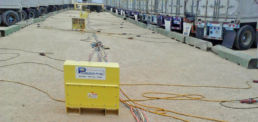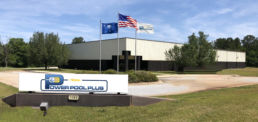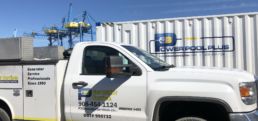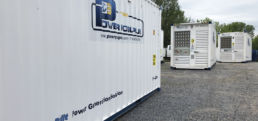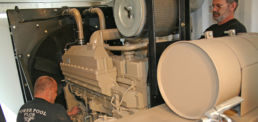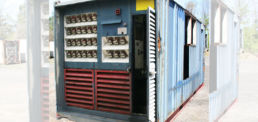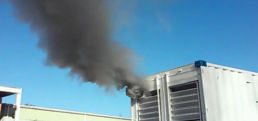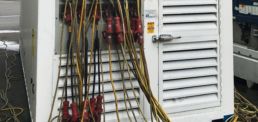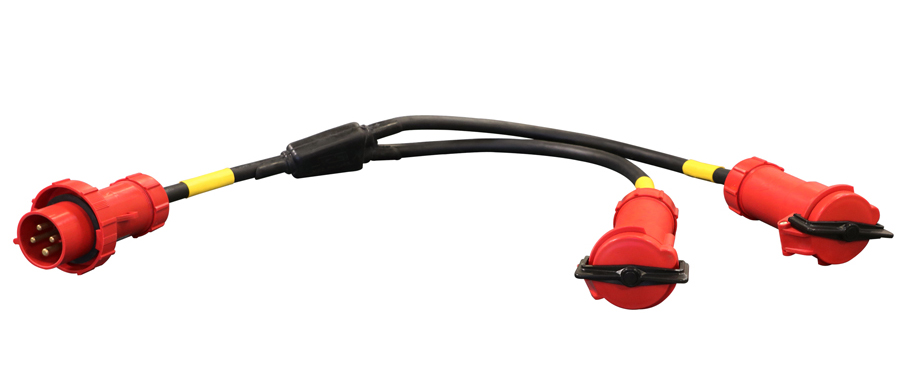Refurbishing Power Pack Reefer Generators: How to Save Money and Time
In the world of refrigerated transport and cold-chain logistics, power pack reefer generators are vital. They ensure the integrity of the cold chain, protecting perishable goods and refrigerated freight during transit.
However, these refrigerated generators require regular maintenance. Without it, their efficiency can drop, leading to costly breakdowns and cargo spoilage.
This article will guide you through the best practices for maintaining and refurbishing your power pack reefer generators. It aims to help you extend their lifespan, reduce downtime, and save money on repairs and replacements.
Stay tuned to learn how to keep your refrigerated transport running smoothly and efficiently.
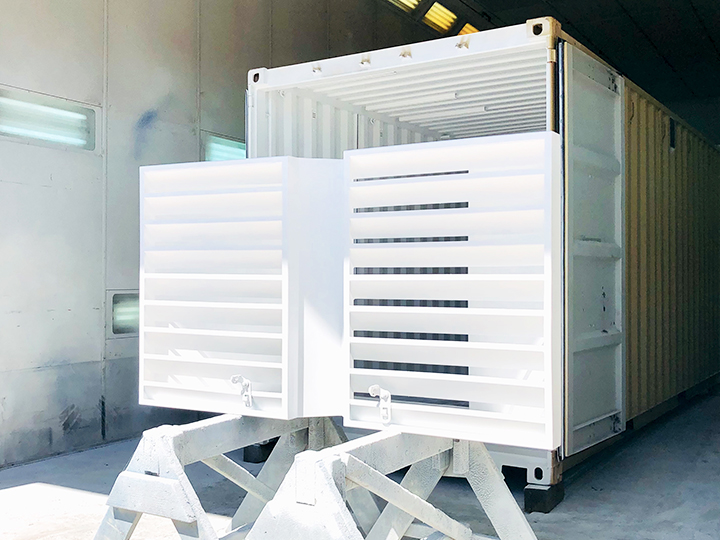
Understanding Power Pack Reefer Generators
Power pack reefer generators play a crucial role in refrigerated transport. They provide the energy needed to maintain the temperature inside refrigerated containers.
These power pack generators are designed to withstand harsh conditions. They are robust, reliable, and built to last. However, like any mechanical equipment, they require regular care to perform at their best.
Understanding how these generators work is the first step towards effective maintenance. They operate on a simple principle: converting fuel into electricity to power the refrigeration unit.
Key components of a power pack reefer generator include:
- The engine
- The alternator
- The fuel system
- The cooling system
- The control panel
Knowing these components and their functions can help you identify potential issues early. This knowledge is essential for effective maintenance and refurbishment.
The Importance of Regular Maintenance
Regular maintenance of power pack reefer generators is vital. It ensures the reliability and efficiency of refrigerated transport.
Without proper care, these generators can break down. This can lead to costly repairs and downtime. Worse, it can compromise the integrity of the cold chain, leading to spoilage of perishable goods.
Regular maintenance can prevent these issues. It can extend the lifespan of your generators, reduce downtime, and save money on repairs and replacements.
Here are some key benefits of regular maintenance:
- Ensures the efficiency and reliability of refrigerated transport
- Prevents costly breakdowns and cargo spoilage
- Extends the lifespan of the generator
- Saves money on repairs and replacements
In short, regular maintenance is an investment. It pays off in the long run by ensuring the smooth operation of your refrigerated transport.
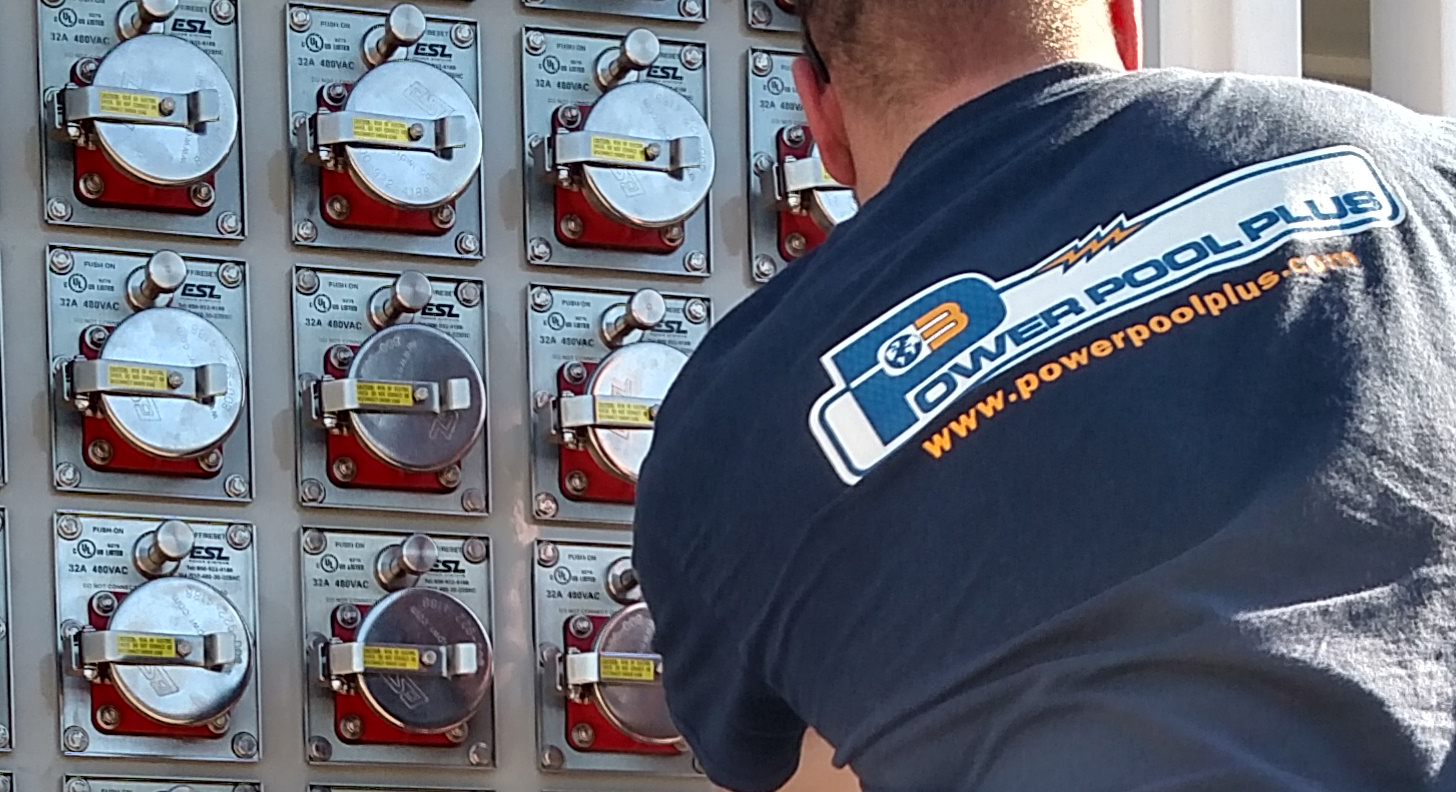
Step-by-Step Maintenance Guide
Maintaining your power pack reefer generator doesn't have to be a daunting task. With a systematic approach, you can ensure its optimal performance.
First, create a maintenance schedule. This should include daily, weekly, monthly, and annual checks.
Here are some key steps to include in your maintenance routine:
- Check the fuel level and refill if necessary.
- Inspect the generator for any visible damage or leaks.
- Clean the generator and its components to remove dust and debris.
- Check the battery and replace it if it's not holding a charge.
- Inspect the insulation and airflow system for any issues.
- Check the refrigerant level and refill if necessary.
- Inspect the electrical connections and tighten any loose ones.
- Perform a load test to ensure the generator is working efficiently.
Remember, safety first. Always turn off the generator and disconnect it from the power source before performing any maintenance tasks.
Also, keep a record of all maintenance activities. This can help you identify recurring issues and plan for future maintenance.
Lastly, don't hesitate to call in a professional if you encounter any issues beyond your expertise. Regular maintenance can go a long way in ensuring the longevity and efficiency of your power pack reefer generator.
Identifying Common Issues and Troubleshooting
Power pack reefer generators, like any mechanical equipment, can develop issues over time. Being able to identify these issues early can save you time and money.
Here are some common issues you might encounter:
- The generator doesn't start: This could be due to a dead battery, a faulty starter motor, or a problem with the fuel system.
- The generator is overheating: This could be due to a lack of coolant, a blocked radiator, or a faulty thermostat.
- The generator is making unusual noises: This could indicate a problem with the engine, such as worn-out bearings or a damaged piston.
- The generator is using too much fuel: This could be due to a dirty air filter, a problem with the fuel injection system, or a lack of regular maintenance.
If you encounter any of these issues, start by checking the most common causes. For example, if the generator doesn't start, check the battery and the fuel system first.
However, if you can't identify or fix the issue, it's best to call in a professional. Trying to fix a complex issue without the right skills or tools can cause more harm than good.
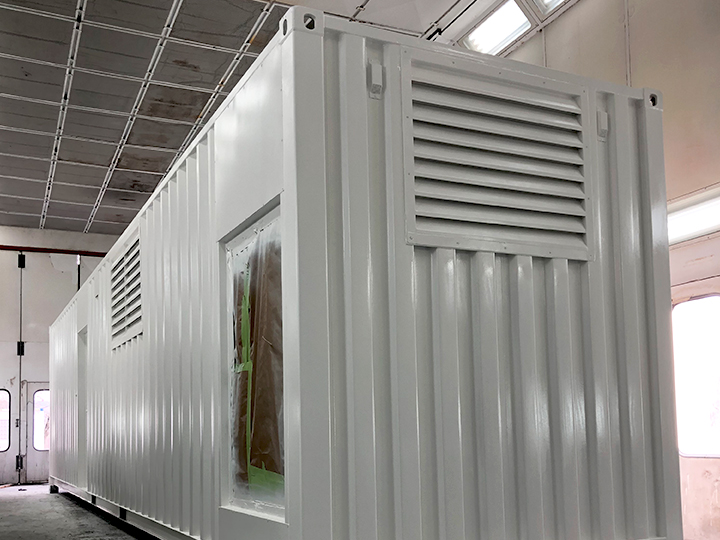
When to Refurbish Your Reefer Generator
Knowing when to refurbish your reefer generator is crucial. It can help you avoid costly breakdowns and extend the lifespan of your equipment.
One sign that your generator may need refurbishing is frequent breakdowns. If you're constantly having to repair your generator, it might be more cost-effective to refurbish it.
Another sign is decreased performance. If your generator is using more fuel than usual or struggling to maintain the right temperature, it might be time for a refurbishment.
Remember, regular maintenance can help you spot these signs early. It's always better to refurbish your generator before it breaks down completely.
The Refurbishment Process: Saving Money and Extending Lifespan
Refurbishing your power pack reefer generator can save you money in the long run. It can also extend the lifespan of your equipment, reducing the need for costly replacements.
The refurbishment process involves several steps. These include inspecting the generator, replacing worn-out parts, and testing the equipment to ensure it's working properly.
Here are the key steps in the refurbishment process:
- Inspection: The generator is thoroughly inspected for any signs of wear and tear.
- Replacement of Parts: Any worn-out or damaged parts are replaced with new ones.
- Testing: The refurbished generator is tested to ensure it's working properly.
Our Process:
- Complete removal of all interior components including end frame
- Container: New container was provided and fabricated to Power Pool Plus design specifications
- Engine: Overhauled in our shop with all new wear parts, cleaned and tested
- Radiator: Re-cored to provide better efficiency and cooling
- Re-coring is the process of re-fitting the inside coils with new components
- Radiators are a key component in Power Pack operation. Whenever possible Power Pool Plus will resource the best possible solution to ensure proper cooling capabilities that exceed customer requirements.
- Generator: Re-built and baked with new tropical coatings to protect the windings from excessive moisture
- Fuel Tank: Inspected for damage. Optional service, if necessary, to cut open for interior mechanical cleaning in the event of an excessive algae build-up scenario.
- Lighting: Increased number of fixtures and upgraded all lighting to high intensity, LED lamps. A critical feature to those that will be servicing the unit.
- End Frame: In this scenario we were able to save the end frame and integrated receptacle panel from the original unit for re-use. This helped us to save the customer $1000′s in replacement costs.
- Improvements: During this process we were also able to recommend to the customer specific areas where Power Pack performance could be enhanced.
- In this case, the original unit provided insufficient air flow for proper cooling and engine operation. The original container was entirely closed providing no access to service large components; such as, radiator, silencer, engine, or generator, without compromising the box through cutting, re-welding, and painting.
- Customer agreed to have us incorporate additional rain proof exhaust louvers and access doors per current Power Pool Plus design. This ensured easy accessibility for maintenance which will extend the service life of the machine.
- Cosmetic Improvement: Freshly painted both inside and out. It’s not just about looking good.
- Having a clean, freshly painted Power pack not only looks nice, but it ensures a solid base protection from the elements by mitigating the negative effects of rust and corrosion. o Interior painting provides extra bright visibility inside the machine which not only aids in maintenance service, but also helps to visually identify potential leaks
Conclusion: The Benefits of Maintaining and Refurbishing Your Power Pack
Regular maintenance and timely refurbishment of your power pack reefer generator are crucial. They ensure the efficiency, longevity, and reliability of your refrigerated transport.
In the end, these practices save you money and time. They also contribute to the integrity of the cold chain, ensuring the safe transport of perishable goods.
Custom Generator Solutions for Refrigerated Cargo
As the demand for transporting temperature-sensitive goods continues to rise, the importance of reliable refrigerated transport (reefer) solutions has never been more critical. From pharmaceuticals to perishable food items, ensuring these goods reach their destination in pristine condition is a top priority for shipping companies. Custom built power generation solutions for refrigerated transport are key to meeting these stringent requirements. Here’s a look at how custom reefer genset solutions are powering the cold chain logistics industry.
Understanding Reefer Gensets
Reefer gensets, or refrigerated generators, are specialized power generation units designed to maintain the necessary temperature controls within refrigerated containers during transport. These units are essential for the movement of refrigerated cargo, particularly when transported via trucks, trains, or ships where access to a stable power source is not always guaranteed.
Why Custom Solutions?
Every refrigerated transport operation has its unique set of challenges. Factors such as the type of goods being transported, the duration of the shipment, and the specific temperature requirements all necessitate tailored power solutions. Custom power generation solutions for refrigerated transport are designed to meet the precise needs of each shipment, ensuring optimal performance and reliability.
Custom Reefer Genset Solutions
Custom reefer genset solutions take into account the cargo's size, weight, temperature sensitivity, and the journey's length to ensure that the goods remain at the right temperature throughout transit. By customizing the power generation units, companies can avoid the one-size-fits-all approach, which may not be suitable for all types of refrigerated cargo.
Benefits of Customization
The benefits of opting for custom reefer genset solutions include increased efficiency, reduced operational costs, and enhanced protection for sensitive goods. Customization can lead to gensets that are more fuel-efficient, have better temperature control, and are designed to fit perfectly with the transport containers in use. This tailored approach can also extend the lifespan of the gensets, as they are built to withstand the specific conditions they will face.
Innovation in Refrigerated Cargo Power
The refrigerated cargo shipping industry continues to innovate, with new technologies improving the efficiency and sustainability of reefer gensets. Companies now offer gensets with smart monitoring systems that allow for real-time tracking and adjustments to temperature settings. These advancements ensure that custom reefer genset solutions are not only reliable but also at the forefront of technology.
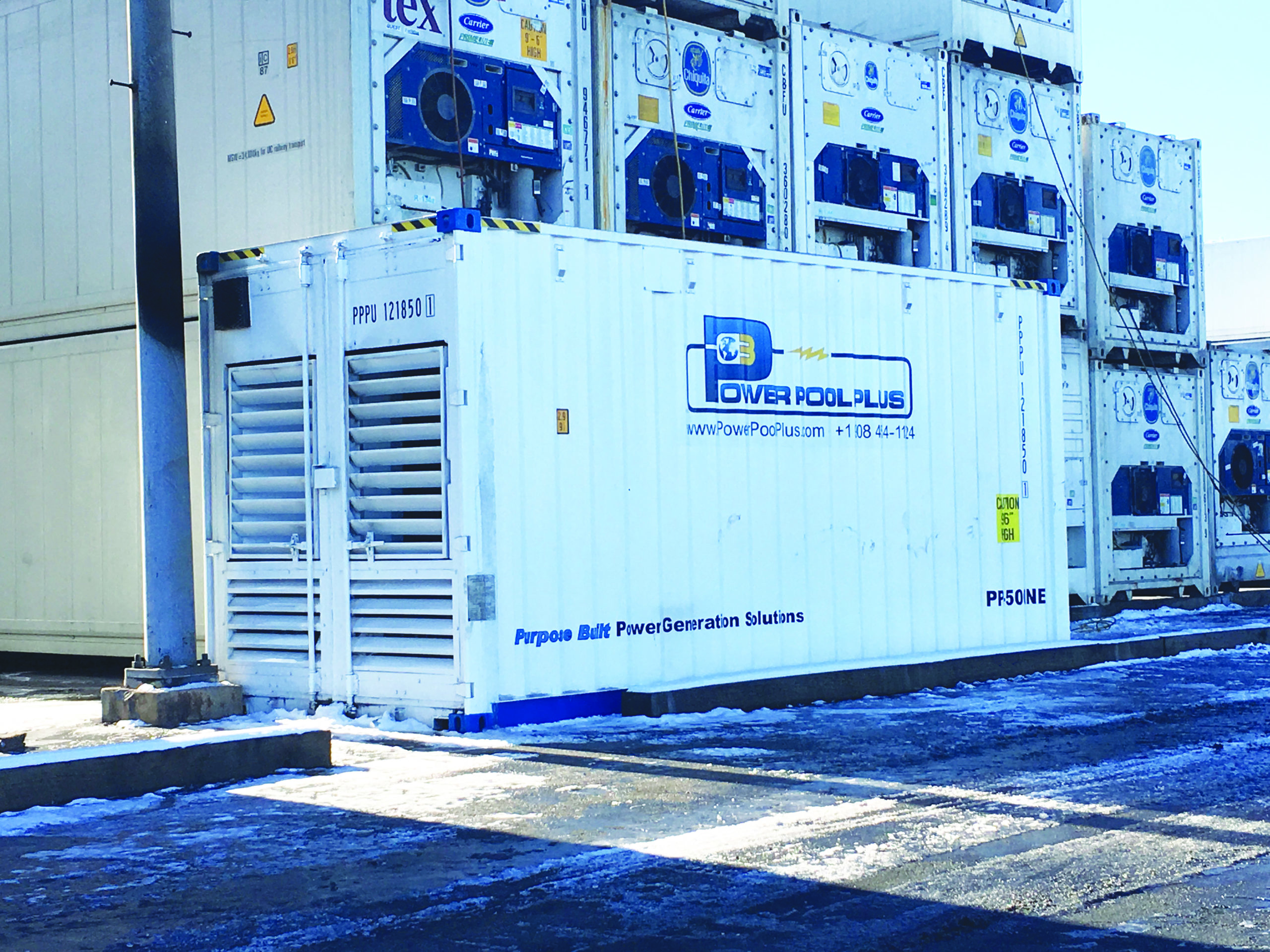
Partnering with Experts
When it comes to acquiring custom reefer genset solutions, partnering with an experienced manufacturer like Power Pool Plus is crucial. Our team of experts can assess your specific requirements and design a power generation solution that aligns with your operational needs. With the right partnership, you can secure the robust and reliable reefer generators necessary for successful refrigerated cargo shipping.
Custom built power generation solutions are integral to the success of refrigerated transport. With the right genset in place, companies can ensure that their temperature-sensitive goods are transported safely and efficiently, maintaining quality and freshness upon arrival. As the industry evolves, Power Pool Plus's custom solutions will continue to play a pivotal role in the advancement of refrigerated cargo power.
Know when to replace your power cables
Check your power cables for safety and functionality
Without quality power cables to transfer electricity from the power pack generator to reefer racks or remote receptacle trees, keeping a reefer yard filled with refrigerated containers would be impossible.
Yet even the best-made cables require proper maintenance to ensure functionality and worker safety.
The ground cabling we use is dual-jacketed to protect the inner copper strands from damage. Yet, the constant dragging of cables across asphalt and gravel yards can take its toll.
Using color-contrasting layers provides a visual indicator. For example, when the outer jacket is worn through, cut, or scraped, the inner jacket reveals a distinctly white visual warning that it may be time to replace the cable.
This visual awareness provides easy identification of abrasion before reaching the copper stranding to ensure the safety of the operators.
See the image below provided by our friends at Trystar cable, which highlights the dual-jacket layers.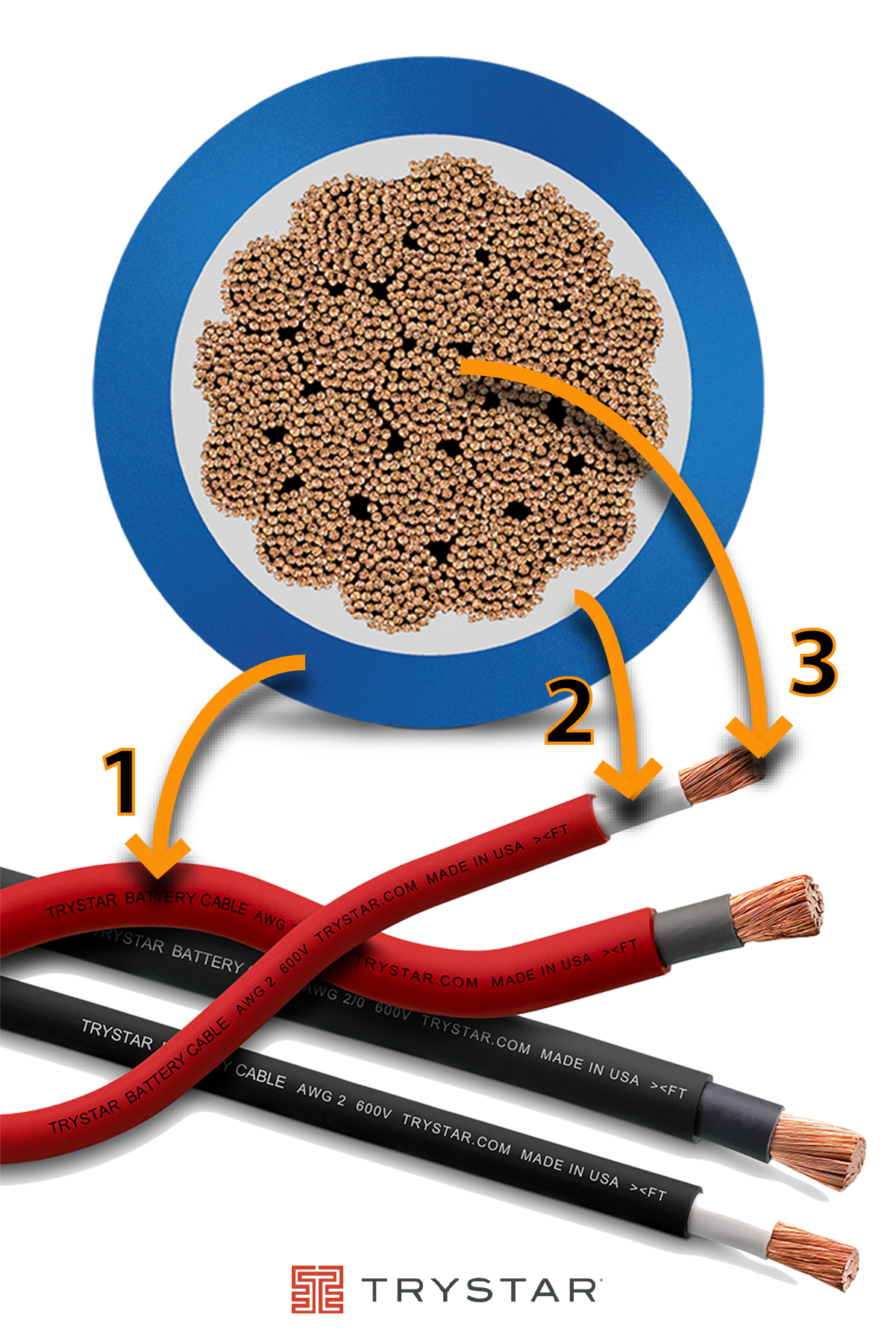
- Outer Jacket
- Inner Jacket
- Copper strands
A best practice when handling ground cables is to pick them up and move them into position to avoid unnecessary scuffs. Protect them from moving vehicle traffic, do not allow them to lay in pooling water, and inspect them frequently for damage.
Get a quote today, on your next Purpose-Built Power Pack.
Ted Shelson
VP Marketing
Power Pool Plus
How we're meeting today's supply chain challenges
An unprecedented challenge.
COVID shutdowns and lost labor time, shipping delays, crippling storms, and raw material shortages - Nearly all suppliers and end-users are experiencing challenges due to the inability to secure the parts and materials needed for timely production.
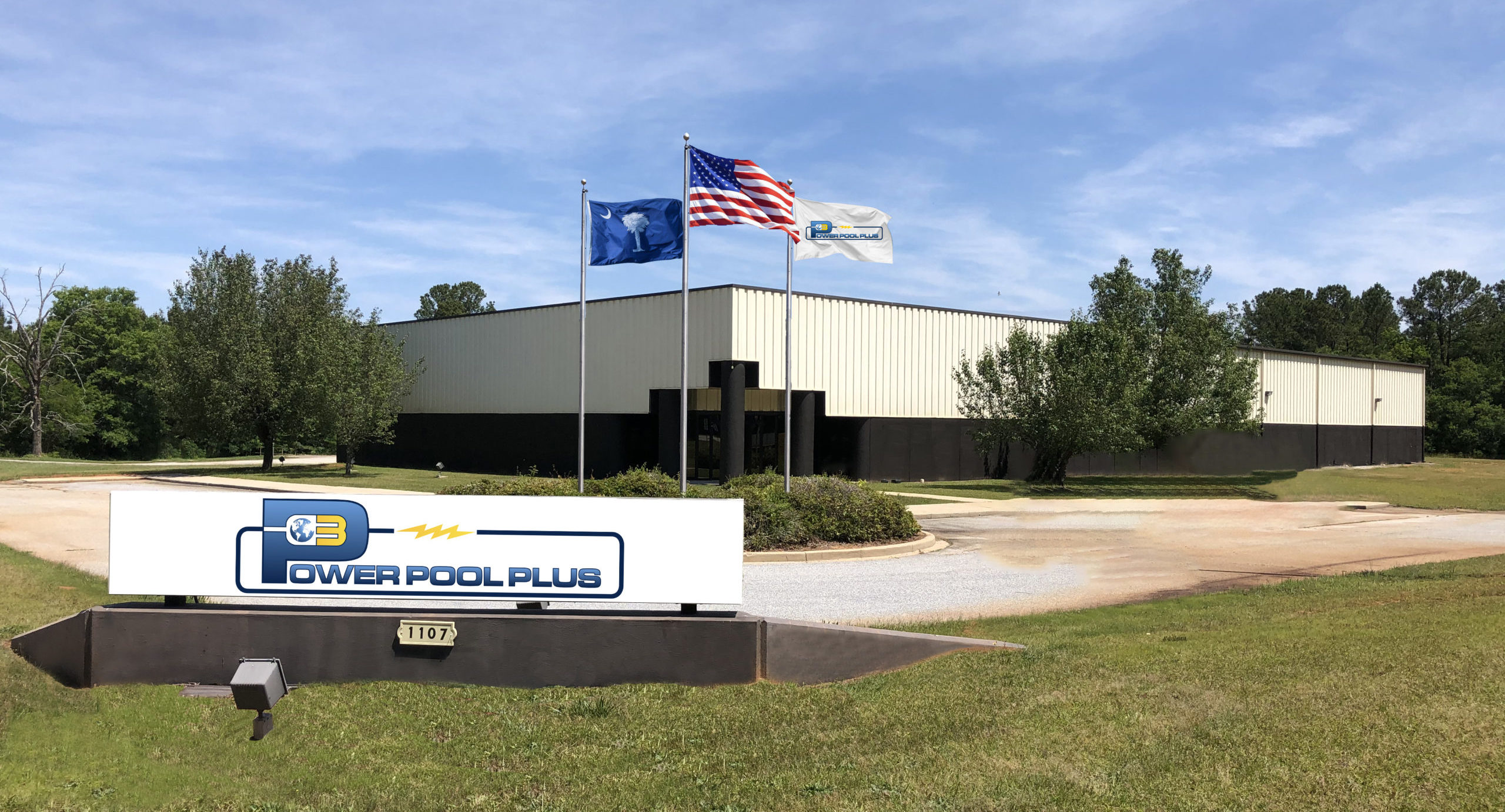
Power Pool Plus is no exception.
Even with the increased manufacturing capacity from our newly opened Greenwood, South Carolina plant, which affords us an additional 30,000sqft on 12+ acres of manufacturing space, delays in receiving raw materials for production prove problematic and negate any impact from this infrastructure investment.
For example, steel and electrical cable, two of the most used materials in our Power Packs, usually promised from our vendors in a few days, is now turning into 6-8 weeks or more. Our challenges are their challenges, as they count on commitments from their suppliers to turn products. It’s a vicious cycle.
According to a recent Wall Street Journal Report, up to 40 vessels anchored off Southern California ports had been waiting for dock space, which has since ebbed to around 17 earlier this week. While that is still too large a number, the backlog continues to shrink as ports and trucking catch up with the increased volumes.
But still, we are finding various steel products disappearing off our vendors’ shelves. And the availability of 20 and 40-ft high cube containers is also difficult to find at once typical prices. We continue to order in higher quantities than usual to stay ahead, so we have inventory to keep up with the demand.
While inflation has primarily been kept in check, there is talk about possible increases later in the year.
The good news is (there's always some good news),
as the world awakens from its COVID-induced sleep, it is clear that the demand for goods is strong. Consumers are looking to buy, and industries are ready to make investments to meet the demand. Refrigerated transport is no exception. As the demand for fresh produce increases, the need for power at ports to manage reefer throughput will remain high.
Our power packs are needed, orders are up, and accordingly, we have made investments in our production facilities to stay ahead.
So be patient. These delays will pass, and a sense of normalcy will resume. Until then, please know that all of us at Power Pool Plus are working hard to provide you with the finest Purpose-Built Reefer Power Genset on the market while remaining at a reasonable price to help your operation succeed.
Suppose your reefer management team is looking to increase productivity this year with new Power Pool Plus power packs. In that case, we highly suggest placing orders as soon as possible to minimize potential delays and expected increases in material costs.
Get a quote today, on your next Purpose-Built Power Pack.
Ted Shelson
VP Marketing
Power Pool Plus
4 Essential Troubleshooting Tips for Power Packs
Reefer operators have only one thing on their mind, make sure that the refrigerated cargo under their care is kept safely to spec.
Having a diesel genset go down is never an option. But understanding a few of the issues that may cause a diesel generator to fail, may help to save the refrigerated loads and avoid a service call in the middle of the night.
Thankfully, most power pack failures are quickly resolved, and with some basic knowledge, can be managed successfully without having to wait for service.
To help your team through some of the most common issues, here are a few troubleshooting tips.
Power Pack will not start
- Check that the battery disconnect switch is closed, and the batteries are charged.
- Are the Emergency Stop Buttons
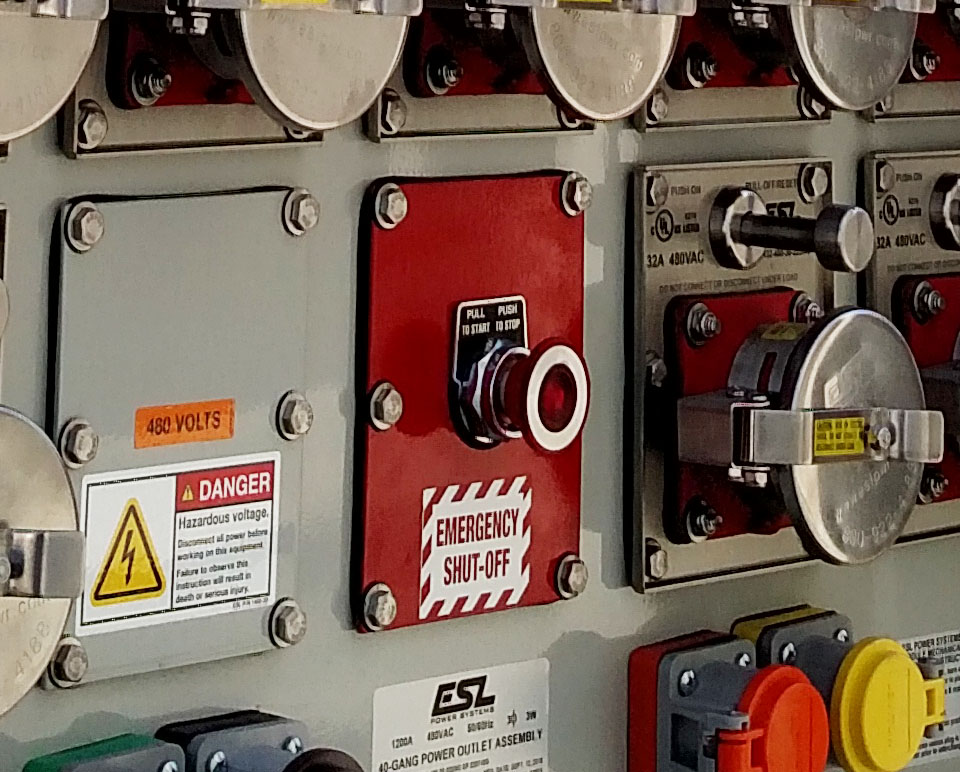 engaged (pushed in)? Pulling them out may start the generator. Ensure that no one is working on the generator or is inside the container enclosure before pulling out any emergency stop button. There are two E-Stop buttons - one located outside the main door and another inside near the control panel.
engaged (pushed in)? Pulling them out may start the generator. Ensure that no one is working on the generator or is inside the container enclosure before pulling out any emergency stop button. There are two E-Stop buttons - one located outside the main door and another inside near the control panel. - Is there fuel in the tank?
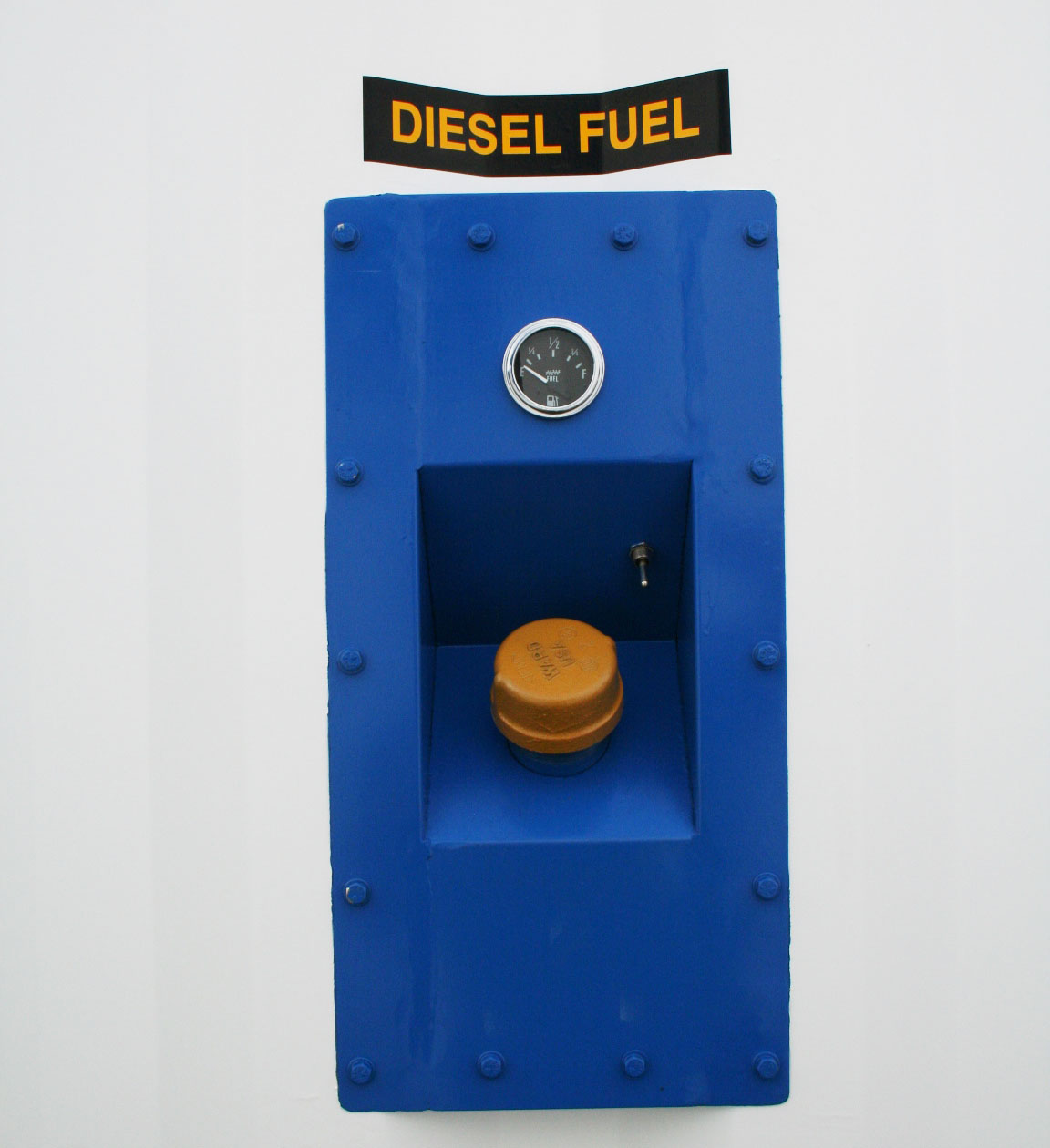 Yes, it may seem obvious, but our road service team has been called out many times only to discover a power pack that was allowed to run out of fuel. Note: after refueling, prime all fuel filters with fuel before restarting the engine. This will ensure a quick start and protect the fuel pump from damage.
Yes, it may seem obvious, but our road service team has been called out many times only to discover a power pack that was allowed to run out of fuel. Note: after refueling, prime all fuel filters with fuel before restarting the engine. This will ensure a quick start and protect the fuel pump from damage.
Power Pack shuts down without warning
- Fuel issues are the leading cause of power pack failures in ports. Poor fuel quality means clogged fuel filters. Change fuel
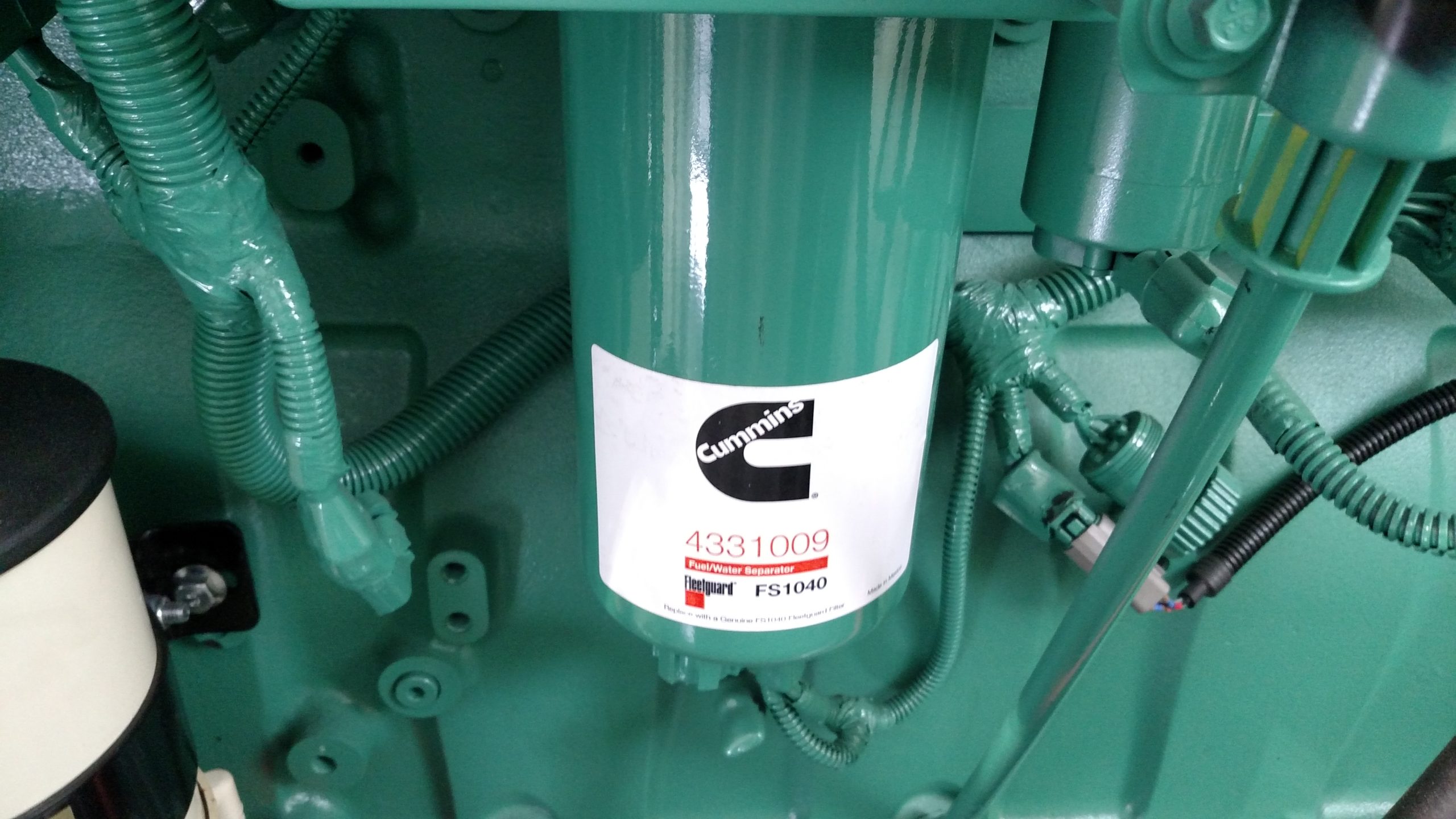 canisters and elements, and drain and clean fuel/water separators frequently. Prime all fuel filters.
canisters and elements, and drain and clean fuel/water separators frequently. Prime all fuel filters. - Overloading power packs is a common problem, and can easily lead to generator shut down and loss of the connected load. It happens when the
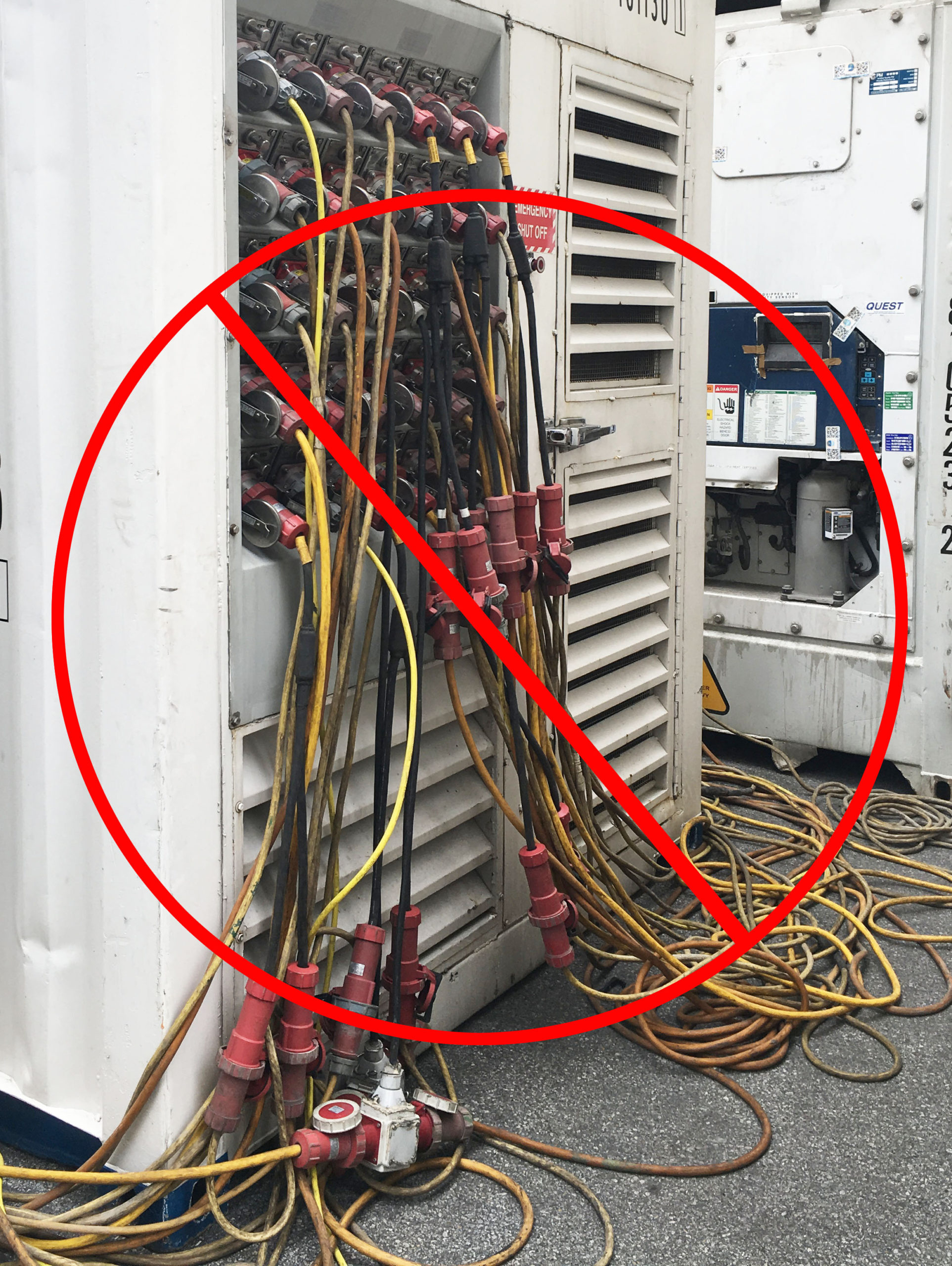 reefer operator has more refrigerated containers to keep powered than available receptacles on the power pack. Beware of commonly used splitters to add capacity to power pack receptacle panels. An over-zealous operator may be inclined to connect as many as double the rated capacity of the power pack. It won’t take long to exceed the limitations of the power pack causing the main breaker to trip and cutting electrical current from the generator to the plugs.
reefer operator has more refrigerated containers to keep powered than available receptacles on the power pack. Beware of commonly used splitters to add capacity to power pack receptacle panels. An over-zealous operator may be inclined to connect as many as double the rated capacity of the power pack. It won’t take long to exceed the limitations of the power pack causing the main breaker to trip and cutting electrical current from the generator to the plugs. - Low oil level, low coolant level, and other alarm faults can cause your power pack to shut down to protect itself from damage. Before each startup, or at regular intervals during 24hr run cycles, visually inspect for leaks and worn parts, check and top off all fluids to proper levels, adjust loose belts or replace as necessary, and remove debris from the container compartment.
Power Pack runs but does not produce electrical power
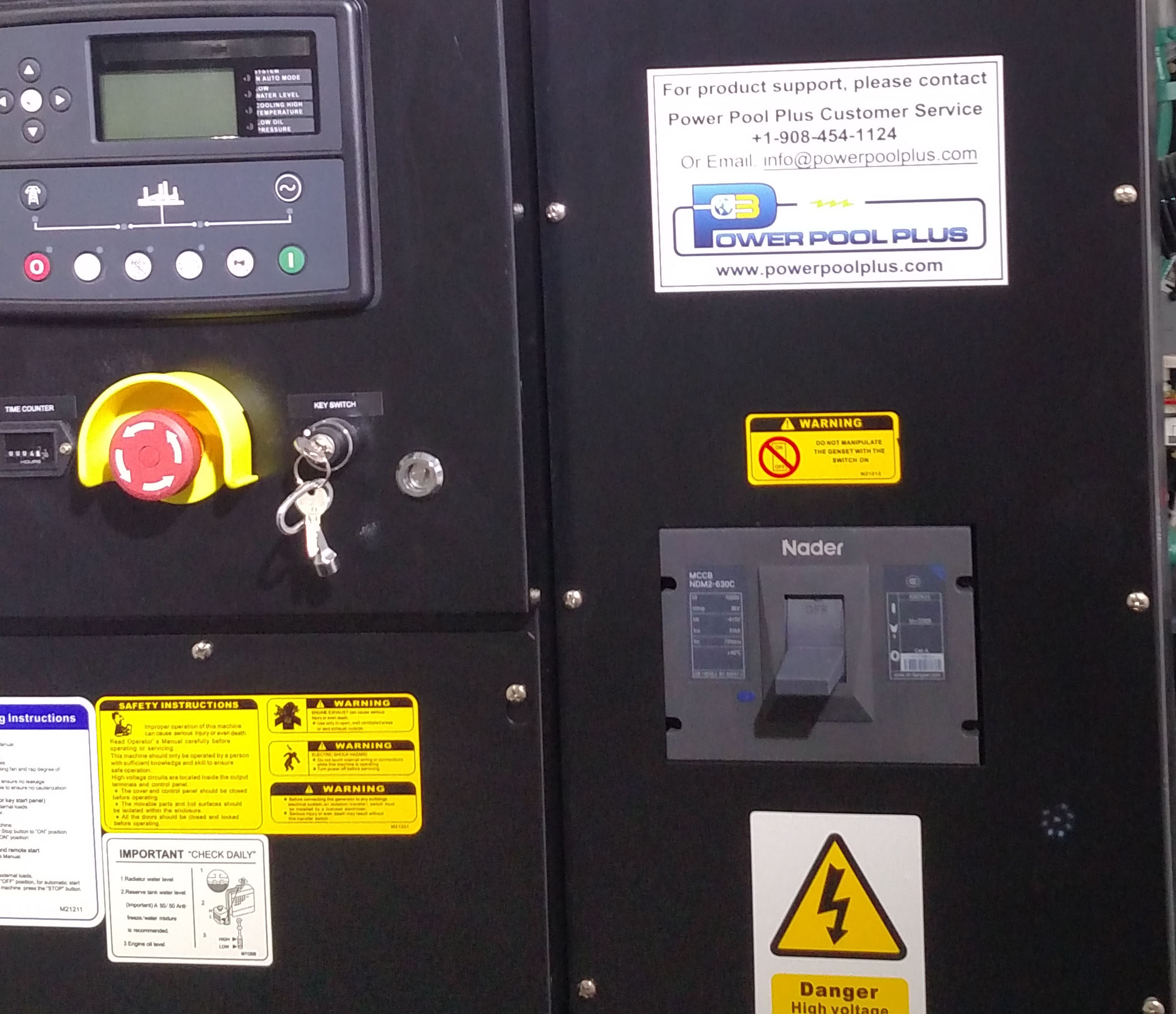
- Check that the main breaker is engaged. Every power pack is different, but commonly located near the main control panel. Best practice is to engage the main breaker AFTER starting the engine.
Power Pack produces black exhaust smoke when running
- Black exhaust smoke is a common sign of wet-stacking caused by under-loading a generator. Power Packs come in many sizes,
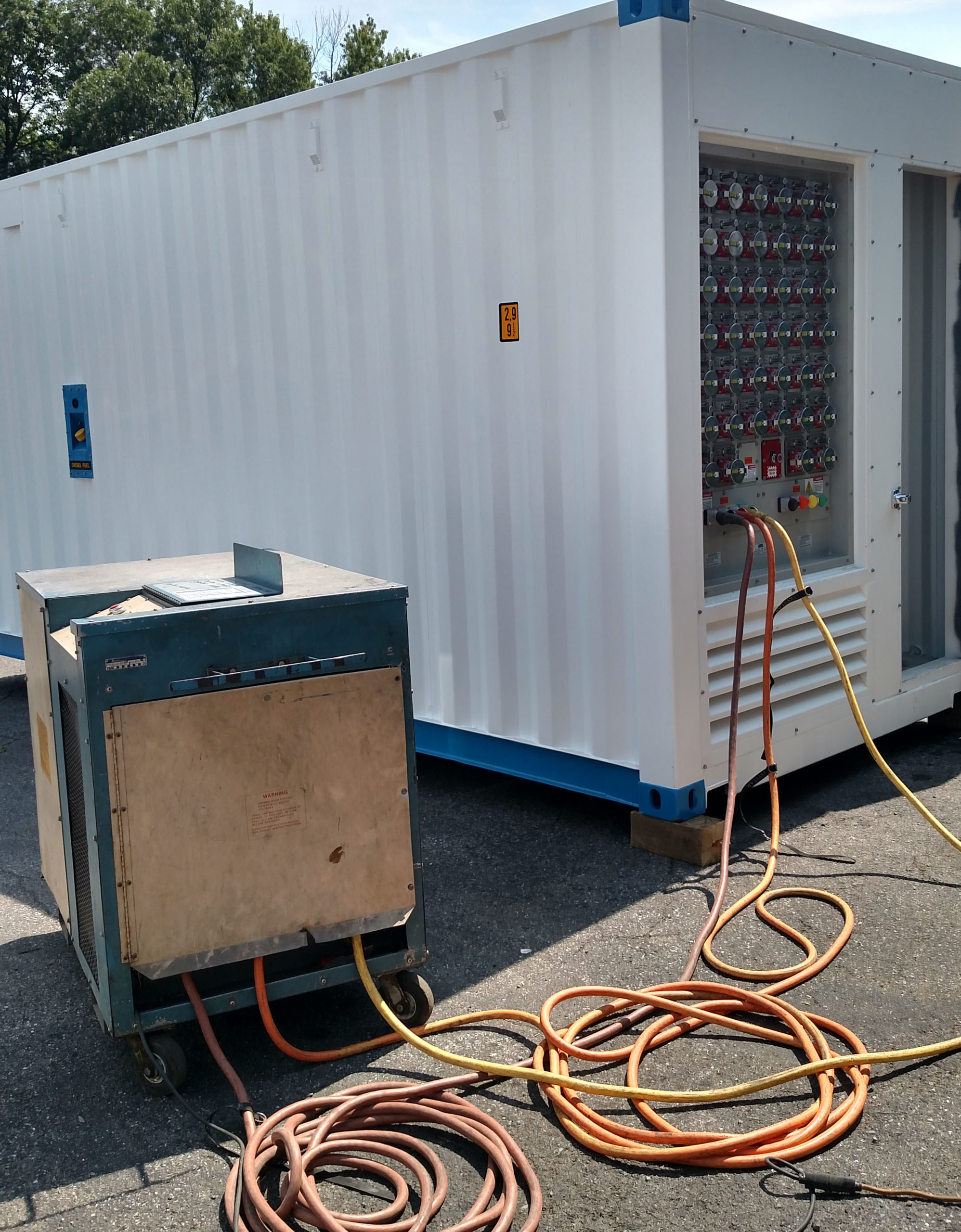 typically identified by plug count (20-plug, 30-plug, 40-plug, and so on). They can carry a load equal to that number of refrigerated containers. Connecting less than half that amount over long periods is equivalent to starting your car and letting it run idle all day long, which is not ideal for the vehicle. A diesel engine will create soot, or unburnt fuel when operated like this. Too much of this carbon buildup will rob the diesel engine of vital power. Loading up the power pack to its capacity should clear most black smoke issues. If not, a load bank may be needed to replicate or add additional load to the power pack. Power Pool Plus can assist in this.
typically identified by plug count (20-plug, 30-plug, 40-plug, and so on). They can carry a load equal to that number of refrigerated containers. Connecting less than half that amount over long periods is equivalent to starting your car and letting it run idle all day long, which is not ideal for the vehicle. A diesel engine will create soot, or unburnt fuel when operated like this. Too much of this carbon buildup will rob the diesel engine of vital power. Loading up the power pack to its capacity should clear most black smoke issues. If not, a load bank may be needed to replicate or add additional load to the power pack. Power Pool Plus can assist in this.
Final Thought:
Power Packs are essential equipment for nearly every reefer operator. Setting aside even a small amount of time to understand a few of these concerns and how to address them quickly will go a long way in protecting your power pack and the valuable refrigerated load connected to it.
Questions? Contact Us.
The Power Pool Plus Service Team is available anytime to help keep your power pack reefer gensets running at their best, day or night.
Ted Shelson
VP Marketing
Power Pool Plus
5 Solid Cases for Renting Your Next Power Pack
Renting Power Packs for your reefer operation not only makes financial sense but when compared to renting other power generation solutions, Power Packs remain the best choice.
And because so much is a stake with every refrigerated container under your care, here are five reasons why your rental choice should be a Power Pack and not just any standby generator.
- Operational vs. Capital Expense – Renting power packs allows a more flexible approach to managing finances. Rather than budgeting a considerable expense all at once, rentals can provide a more economical method for handling day to day operations.
- Seasonal spikes in reefer throughput – Short term increases in refrigerated container throughput can create challenges for even the most prepared reefer operator. Power packs afford peace-of-mind during peak seasons, making large ship calls, day or night, more manageable.
- Port construction projects – When your reefer yards get disrupted during port construction projects, rental power packs assist port operators by creating temporary diesel-powered reefer yards in areas of the port where electrical infrastructure may not exist.
- More than a standby generator – Compared to rolling up a standard generator set from your local rental company, consider the unique design that power packs offer. Built with the reefer operator in mind, power packs feature integrated receptacles mounted on the enclosure, ease of service, and a footprint that fits neatly into the world of container handling. Renting a power pack is the more logical choice for reefer operators.
- Most importantly, Flexibility – Instant reefer yard - anyplace, at any time. Without the restriction of fixed electrical outlets, the reefer operator with diesel power packs at his disposal can set up a reefer yard anywhere space allows, big or small, in a short time. Renting power packs allows any port to enter the world of reefer cargo quickly.
Power Pool Plus offers the right rental equipment that's backed by a committed team of service specialists. We understand the critical nature that power pack generators play in the business of handling refrigerated containers.
Learn about our Power Pack rental products
Ted Shelson
VP Marketing
Power Pool Plus
5 Ways to Protect Your Power Pack During Emergencies
COVID-19 related events are having a profound effect on local grocery store inventory. The resilience of the supply chain will have a significant impact on the health and welfare of all of us.
Even those that until now may not have fully understood the role that we in the refrigerated transportation industry play in keeping fresh produce on the shelves, they are indeed watching us now.
One key element is the Power Pack reefer generator to ensuring the successful throughput of the perishable cargo under your care.
All of us here at Power Pool Plus remain available to assist where possible. Your team, however, is the first line of defense against unexpected generator shutdowns. And the proper maintenance practices that you follow may make the difference between success and failure.
Here are some fundamental steps that everyone on your team should know in regards to Power Pack maintenance.
- Keep extra fuel filters on hand - Bad fuel is the #1 cause for generator failure. Checking for clogged fuel filters is an excellent first action to power pack shut down. Replace each as needed and be sure to correctly prime each filter before installation. If equipped with a RACOR filtration system, visually check for debris and clean as necessary.
- Avoid low reefer count per Power Pack - In other words, try to limit the times that each power pack is under-loaded, or under 50% capacity. Under-loaded Power Packs will cause a condition known as wet-stacking, indicated by thick black exhaust smoke, which may limit engine performance when you need it most.
- Check Oil Levels Daily - Daily inspection of oil levels, including reserve make-up tanks (if equipped), will prevent surprise shutdowns due to low oil pressure.
- Check Coolant Levels Daily - Change in reefer load quantities from low to high can affect engine operating temps causing some coolant to release from the system. Daily inspection can reduce shutdowns due to low coolant levels.
- Keep up with routine maintenance schedules - The best line of defense against power pack failure is to keep fresh eyes on your machines as frequently as possible. Here are our suggestions:
-
- Every 250 Hours
- Change Oil and Filters
- Change Fuel Filters
- Inspect Belts and Hoses for Wear (Replace as Needed)
- Inspect for Oil and Coolant Leaks
- Address any concerns ASAP or contact Power Pool Plus
- Every 500 Hours
- Same as above PLUS change Air Filters
- Inspect radiator for dust and debris build-up. Note: clogged radiators should only be cleaned by professionals with the right equipment and skill to prevent delicate radiator damage.
- Every 250 Hours
These steps are only a few first response actions to keep your power pack generator healthy and operational. If there are other concerns or questions related to power pack maintenance, please contact Power Pool Plus for more details.
Considering a used Power Pack? Here's how to reduce risk.
Used reefer gensets, known as power packs, can offer refrigerated container operators both large and small an inexpensive way to expand their operation and increase refrigerated container throughput. Lower initial investment costs of used power packs also reduces financial barriers, allowing start-up operations the flexibility to gain entry into the reefer market.
Yet, buying anything used is risky. Knowing what to look for is key.
Understand your needs first.
Since the supply of preowned power packs may be limited, there’s a tendency to purchase the first one that comes along, usually the one that first appears to be in good condition. But it’s very important that the power pack you choose fits your needs correctly. A generator that is too large – having a kW rating that’s higher than your expected load - can be almost as bad as having one that’s too small for your needs. Our article on wet-stacking highlights this.
If your operation will need to power 20, 30, or 40+ reefer containers, then be sure your power pack is sized to meet at least 70% of that number consistently. In this way, you will not risk unexpected generator shut-down due to overloading and your connected load will be sufficient enough to avoid problems associated with wet-stacking.
Be realistic
Good or bad, used power packs will have a history to them. It's fair to assume that before being replaced most power packs are typically used right up to the point of near failure; until the very last bit of productivity is squeezed from their essence.
What remains is a worn-out engine that’s unable to maintain horsepower, a generator with windings that are nearly torn from the stator and unable to produce electrical current safely, a rotten container that’s rusted through, broken and unusable receptacles, plus many other failings. With thousands of dollars in perishable cargo at stake, used machines are hardly something that can be purchased AS-IS and be expected to provide quality power generation. This is the risk.
Even if the used power pack that you are considering is not nearly as bad as the one pointed out in this example, it is safe to say that purchasing a used machine will offer limited life expectancy and require some sort of additional investment. Major failures can happen at any time creating huge and unexpected repair bills with potentially long power pack downtime – what’s that worth?
These costs are real and need to be figured into the overall operating expenses of purchasing and owning a used power pack with questionable history and limited records availability.
A better solution,
One that won’t leave you stranded like an old, worn-out power pack might.
Allow Power Pool Plus to provide the right used power pack for you. Our experienced team will identify the right generator package that’s properly sized to meet your requirements. Because finding one that’s sized correctly for your needs may not always be easy.
Through our comprehensive inspection process and in-depth operational evaluations, Power Pool Plus offers peace-of-mind on every used generator package purchased through us.
Here’s how we do it
Once a used generator passes our initial operational analysis, it goes through a process that we call re-qualification.
The engine and generator are the core components of any refrigerated container power pack. So our re-qualification process focuses on documented and historical failure facts based on each make and model genset. And with 30 years’ experience there is quite a bit of history to lean on.
Our intent is to extend the service life of a known low hour engine or generator set at a cost savings to our customers – often times as much as half the cost of purchasing new.
Understanding that the negative effects of fuels, oils, coolants, water, UV rays, age, and dry rot are the #1 enemies of power units, we go through an exhaustive process on any used machine that we evaluate. Key engine and generator parts are evaluated and replaced as necessary to ensure a product that is capable of handling the demands of typical power pack operations.
Other components like the shipping container enclosure, fuel tank, receptacle panels, and controls are reconditioned or replaced as needed.
The end result will allow your operation to be successful through owning a used reefer power pack with the assurances of professional inspection and re-qualification provided at a significantly reduced cost over a new machine.
While it’s difficult to eliminate all risk when purchasing used gear, our team reduces the chances of failure significantly and provides our customers with equipment that will offer productive output while maximizing your operation’s profitability for years to come. And isn’t that why you’re looking for a power pack in the first place?
Don’t take the risk on your own. Trust Power Pool Plus to deliver results and savings.
*Remember to properly maintain your equipment according to manufacturer’s recommendations to ensure long operational life with minimal downtime.
How to manage black exhaust smoke
Attention to load will improve power pack performance.
Power packs are the lifeblood of most reefer cargo operations. Keeping them in top shape through regular maintenance is a necessity.
Understanding load and how it affects power pack health is a critical part of this process.
Is your power pack underloaded?
It might seem obvious that overloading a power pack can have negative implications for a generator’s performance. Yet under-loading can be just as serious, if not more problematic to its long term health.
What does it mean to under-load a power pack?
An underloaded power pack is defined when the amount of load (Reefers) is far below the available power (Plugs) that the power pack is equipped to handle.
This situation may be unavoidable from time to time as there may only be limited numbers of refrigerated containers in your yard - as might be the case between shipments. Other times, it is a practice done intentionally under the misconception that this helps prevent the generator from having to work too hard.
The negative effects of under loading (wet-stacking).
Professionally built Power Packs are designed to precise specifications based upon the amount of load (or electricity) they are demanded to produce. Anything short of that, and the generator is not operating to its fullest potential. They will use more fuel, burn oil, and wet stack (produce black smoke) – issues that in time will lead to a shorter equipment life expectancy and sudden failure.
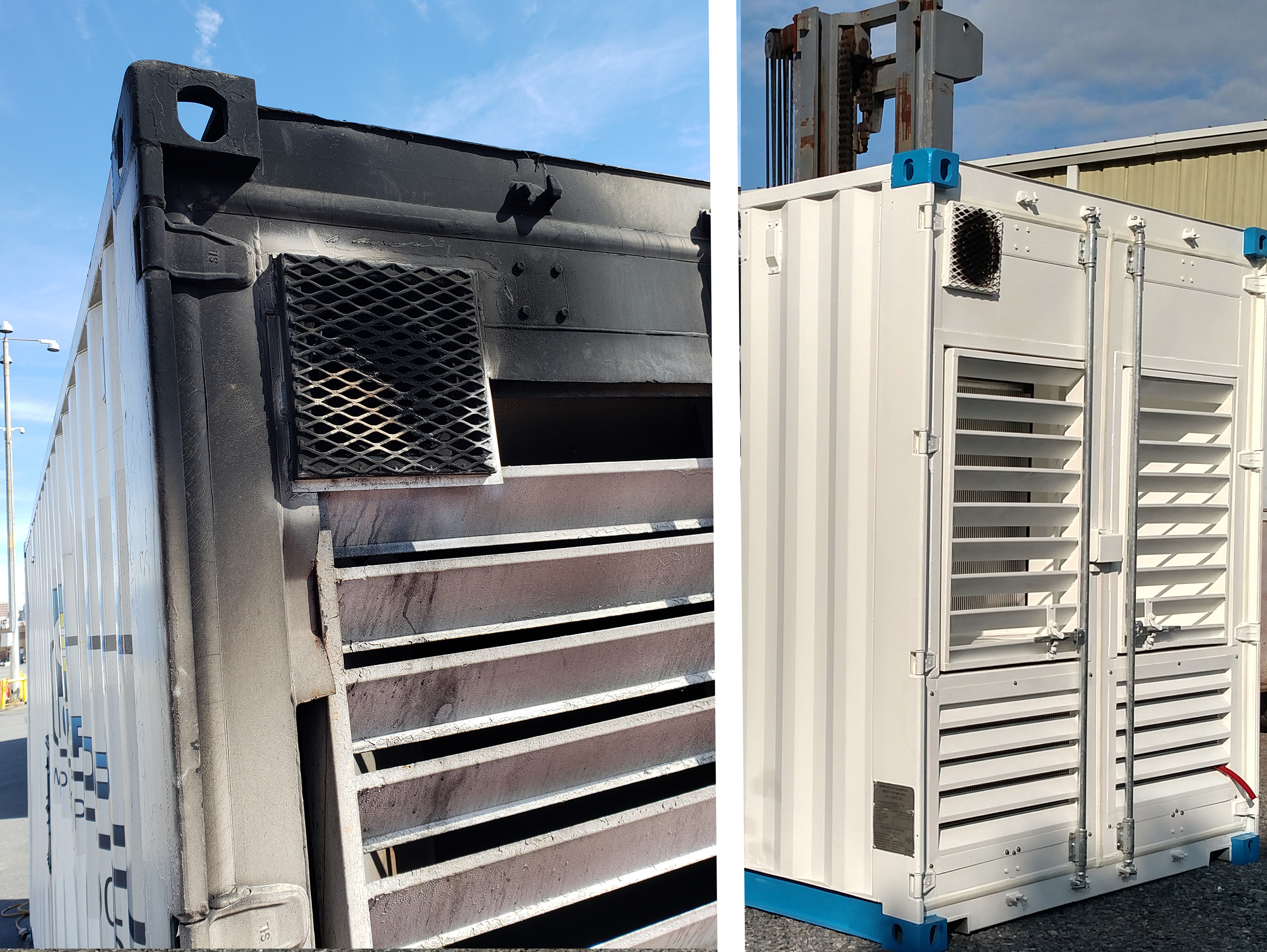
If you are experiencing black exhaust smoke issues, a rather common occurrence called wet-stacking is likely due to the power pack's lack of load.
Solution
To correct this situation, avoid running them on less than the optimal load for long periods of time. We understand that this may not always be practical given the number of reefers available. However, diesel-powered generators perform best when they are fully loaded up with reefer plugs. So be sure to manage them to full capacity periodically or consistently maintain them at an optimal load per generator.
What is the optimal load?
The number of actual reefers needed to obtain optimal load will vary from one size power pack to another. As a general rule of thumb, it is recommended to maintain a minimum of 70% capacity to reach the point at which the generator is working efficiently enough to burn cleanly and avoid maintenance concerns like wet-stacking (Black Exhaust Smoke).
As an example, the optimal load on a 40 plug power pack should be around 28 reefers. This is provided, of course, that the 40 plug power pack is built to proper specification.
* Care should be taken for hot boxes being brought down to temp not to overload the unit. Always follow the manufacturer's recommended operating instructions.
Conclusion
When possible, load up your Power Packs and let them run. Do this, and your black exhaust smoke issues will go away. But if problems persist, it could be signs of a bigger concern. Contact Power Pool Plus for further direction to help resolve.
Have other Power Pack performance questions? Contact us today.
Y-Splitters - Are they good or bad?
When you have more reefers in your yard than plugs available on your Power Pack, it might be tempting to use electrical Y-splitters on your reefer extension cords to increase capacity. But here’s why this practice should be avoided, if possible.
As the demand for fresh produce grows globally, shipping companies have been keeping pace by ordering new reefer containers by the thousands. These latest reefer designs are far more efficient and consume less energy than previous models. So conventional wisdom might suggest that Power Pack diesel generators can handle more reefer containers. Using Y-splitters is an easy way to do this.
What are Y-Splitters?
Designed for temporary use to meet short-term demand spikes, Y-Splitters allow multiple reefer cords to connect to a single power source receptacle.
Caution is advised
While adding more connections than a power pack is designed for may provide a temporary and safe solution when connected to newer low-current reefer boxes, caution should be exercised as it is possible to exceed the specifications of the power pack.
Many container fleets still have a big share of older reefer versions in use today. These, of course, draw a much higher current than the newer designs. When reefer yard technicians cannot control the age of the reefer containers that reach their yard, the risk of overloading power packs increases.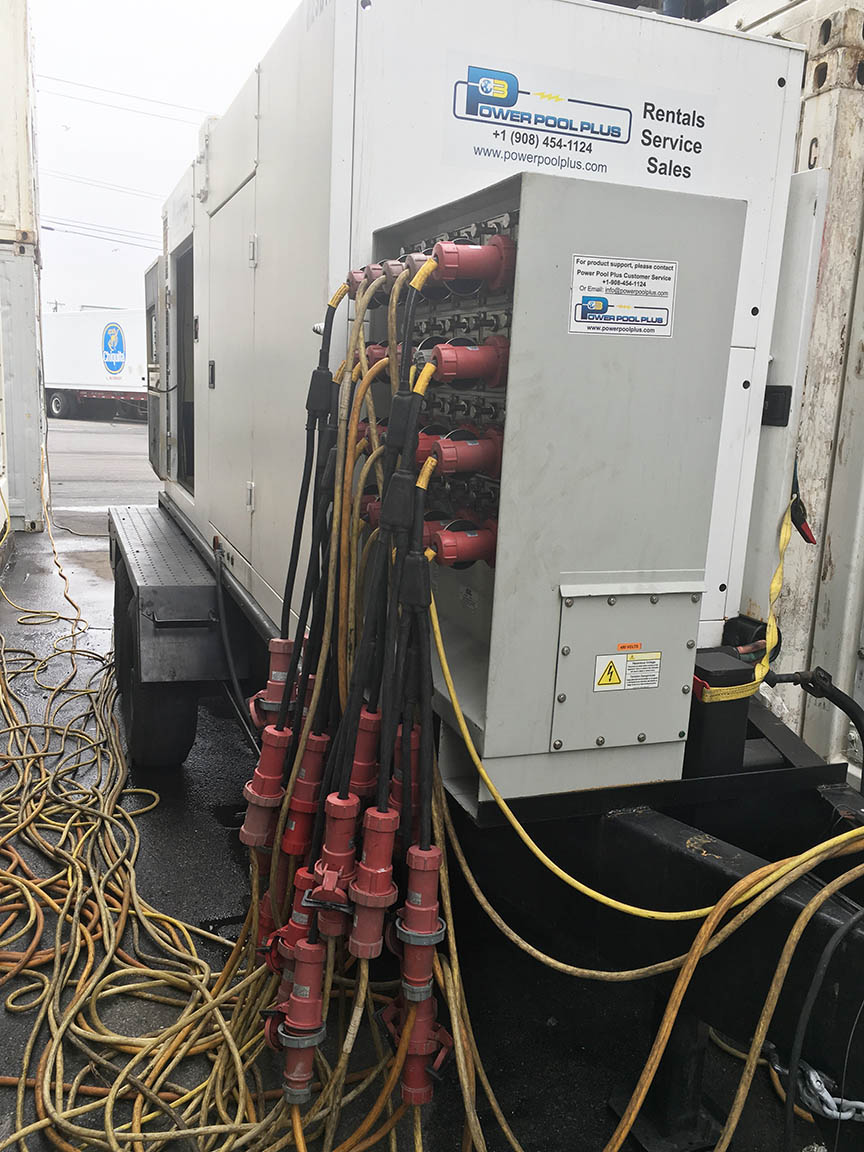
Hot Reefer Boxes
And what if several of the reefer boxes are hot when connected using Y-splitters? When these boxes all come online at once, it’s quite possible that the current draw will exceed the limitations of the power source. With loads of perishable cargo under your care is it really worth the risk of damaging your power pack and losing the valuable cargo entirely
Safety
Then there is the safety aspect. Y-splitters when improperly handled can bypass the integrated safety designs of the receptacle panel. The safety of personnel is paramount. ESL Power Systems, manufacturers of reefer and intermodal electrical components, recommends the following guidelines when using Y-splitters:
- Do not connect or disconnect reefer plugs to a splitter while energized
- Reefer plugs must be connected to the splitters female cord connectors before connecting the male plug to an interlocked outlet
- Use of multiple Y-splitters on the same circuit is not recommended
- Do not exceed the Y-splitter rated current
Y-splitters can be an effective tool for meeting short term, high volume throughput of reefer cargo. Use them with caution while understanding all the variables involved. And if more plugs are needed to meet short or long term refrigerated container demands, increase your capacity safely with additional power packs or portapacks from Power Pool Plus.
For questions on how to properly apply refrigerated container load to your power packs, contact Power Pool Plus.
Ted Shelson, VP Marketing
Power Pool Plus


